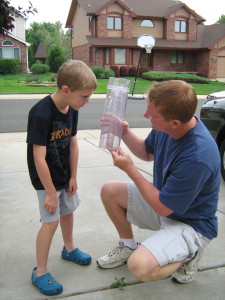Precipitation data for Colorado’s Yuma County can be hard to come by. There are only a handful of certified rain gaugers in the county who submit data to the Community Collaborative Rain, Hail and Snow Network website.
But this spring officials at CoCoRaHS, which is based at Colorado State University, should have plenty of data.
CSU officials have received a grant from the Youth Learning as Citizen Environmental Scientists, a national nonprofit organization, to arm Yuma County fifth graders with rain gauges. 
The hands-on outreach program kicks off later this month. CoCoRaHS educators will visit Buchanan Middle School in Wray; Idalia Elementary School in Idalia; and Liberty School in the town of Joe. There they will meet with fifth graders and their teachers to distribute certified rain gauges, explain how to set them up, when and how to record data and how to submit to the information to the CoCoRaHS website.
“We’re excited for this outreach project and very grateful to (YLACES) for funding it,” said Noah Newman, CoCoRaHS outreach coordinator. “It’s a great way to get students interested in science and precipitation. They are submitting real data that gets used by real scientists.”
A new program
For the last several years, CoCoRaHS has sponsored a bi-annual campaign called “Rain Gauge Week” in April and September to encourage schools that have participated in the precipitation program to dust off their equipment and start recording data. More than 800 schools in all 50 states and Canada are registered in the CoCoRaHS database.
Last year, CSU introduced a more intense, hands-on program for fifth graders in Weld County funded by the West Greeley Conservation District. For six weeks, students competed to see who could record the most data consistently and accurately and were rewarded with prizes and gift certificates.
Newman said the Weld County program was extremely successful – they still have families recording and logging precipitation data – so they wanted to try something similar in Yuma County.
“We saw a big increase in data in (Weld County),” he said. “Even the National Weather Service office in Boulder noticed it. Some of those kids and their families have continued to participate in CoCoRaHS. Once people do it they tend to get hooked.”
More data needed
Newman hopes something similar occurs in Yuma County. While CoCoRaHS has several observers in the state’s metro areas, there are fewer in the rural areas where data is needed.
For example in Yuma County, there are only a handful of dedicates observers who consistently submit information. But the county also experiences a lot of thunderstorms with wide variability from one mile to the next, so the more data, the better, Newman said.
“There is a real need for precipitation data in rural areas,” he said.